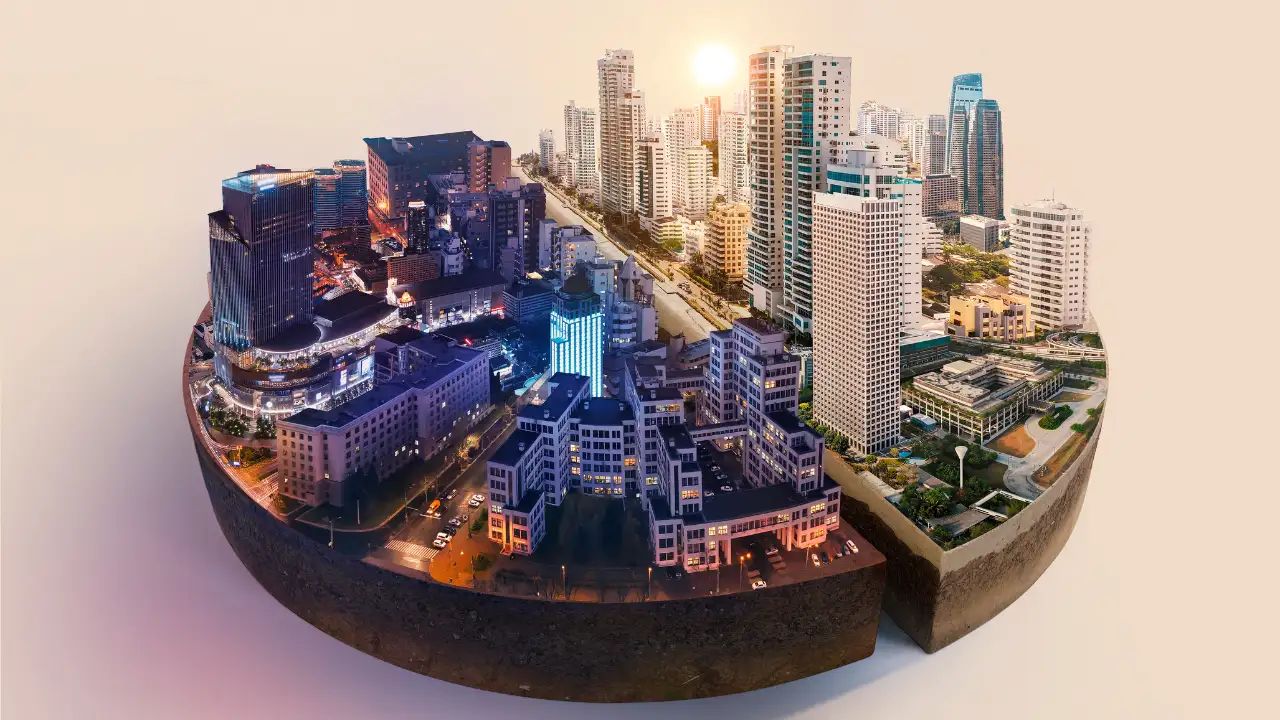Price and location used to be the only things that mattered when buying a home. But now, more and more people are focusing on sustainability. Green buildings are taking the lead, but what’s driving their popularity, and why are they becoming so important in India?
Table of Contents
What Do We Mean by Green Buildings?
Green buildings are built with sustainability at the forefront. They aim to save energy, use eco-friendly materials, reduce waste, and lessen their environmental footprint. These buildings are much more environmentally responsible with features like solar panels, energy-efficient windows, and water-saving fixtures.
In simple terms, green buildings create healthier spaces for people to live and work while being kind to the planet. With growing awareness of climate change, green buildings are becoming an important part of India’s real estate market.
The Green Building Movement in India: When Did It Start?
The early 2000s marked the rise of sustainable buildings in India, with a pivotal moment in 2001 when the Indian Green Building Council (IGBC) was formed. Its purpose was to advocate for green building practices and set sustainability standards nationwide. In 2004, the IGBC launched its green building certification system, which soon became the gold standard for developers focused on eco-friendly construction.
India’s first green building, the L&T Campus in Chennai, was developed by L&T (Larsen & Toubro) in 2003. This building was one of the first to prioritize sustainability, incorporating energy-efficient systems, water conservation measures, and eco-friendly materials. Since then, many developers have embraced green building principles, incorporating sustainable features into residential and commercial projects across India.
Leading Indian Developers Pioneering Sustainable Projects
In recent years, many developers in India have started taking initiatives towards building sustainable developments. Building sustainable projects includes provision for rainwater harvesting, adding solar panels, and energy-efficient appliances, and overall creating a healthy environment for humans as well as nature. Several leading developers in India are now prioritizing eco-friendly projects, with green building practices at the forefront of their designs.
Eco-Friendly Development by Lodha Group
As one of India’s leading developers, Lodha Group is committed to sustainability. Lodha The Park in Mumbai is a great example of how luxury and environmental responsibility can go hand in hand. The project includes energy-efficient architecture, solar panels, water recycling, and green landscaping to minimize its carbon footprint.
Another standout project is Lodha Belmondo near Pune, which combines upscale living with sustainable practices like rainwater harvesting and energy-efficient appliances. In Mumbai, Lodha Palazzo is another example of the group’s green approach, offering natural ventilation, energy-saving lighting, and waste management systems. Lodha properties are developed on eco-friendly concepts rather than just premium and luxury projects.
DLF: Redefining Green Living
DLF Group has been leading the charge in sustainable real estate. DLF Garden City in Gurgaon perfectly captures this, featuring water conservation, energy-efficient buildings, and green landscaping that make it a standout eco-friendly community. In Gurgaon, DLF Cyber City has also incorporated the latest energy management systems and smart technologies to reduce environmental impact.
In Mumbai, DLF Square, a LEED-certified office space, further underscores DLF’s commitment to green development, featuring energy-efficient solutions and green landscaping.
Tata Housing’s Eco-Friendly Approach
Known for its sustainability focus, Tata Housing, being a part of the Tata Group, is committed to constructing eco-friendly projects. The Tata project in Thane, Tata Amantra is one of the Tata projects which is built with sustainability in mind. This residential development includes solar-powered lighting, systems for rainwater harvesting, and natural ventilation designs, ensuring an eco-friendly lifestyle. Tata Primanti in Gurgaon is another example, offering energy-efficient homes built with sustainable materials and supported by advanced waste management technologies.
In Mumbai, Tata Housing’s Tata Housing’s New Haven in Thane is a green residential development with eco-friendly features like rainwater harvesting, energy-efficient lighting, and solar power systems, making it one of the greenest residential projects in the region.
Eco-Friendly Developments by Godrej Properties
Godrej Properties is well-known for integrating sustainability into its projects across India. Godrej Green Villas in Pune is a great example, featuring solar panels, water conservation features, and energy-efficient homes. In Ahmedabad, Godrej Garden City incorporates rainwater harvesting, wastewater treatment, and energy-saving lighting, making it one of the region’s greenest residential communities. In Mumbai, Godrej Garden City keeps things eco-friendly with smart waste management, water-efficient landscaping, and solar-powered lights.
Mahindra Lifespace’s Sustainable Developments
Leading the way in green development, Mahindra Lifespace has created Mahindra World City in Chennai, a project that highlights sustainable infrastructure, energy-efficient buildings, and a strong focus on green spaces. Their Aqualily project in Chennai, a LEED-certified community, emphasizes water conservation and energy-efficient homes, setting a benchmark for sustainable living.
In Mumbai, Mahindra’s Mahindra Lifespace development in the suburb of Andheri is a prime example of residential green development, offering well-designed homes with energy-efficient features, rainwater harvesting, and integrated waste management.
Why Sustainable Construction is on the Rise
There’s a growing trend toward sustainable real estate, and it makes sense. More and more buyers and renters are considering the environmental impact of the homes and offices they choose. Millennials, in particular, are leading the way. Research shows they’re more likely to pay extra for eco-friendly buildings because they want to live in ways that are better for the planet and reduce their carbon footprint.
It’s not just about the environment, though. People are realizing that green buildings can also save them money. Energy-efficient homes and offices usually have lower utility costs thanks to better insulation, more efficient heating and cooling systems, and solar power. For example, buildings with solar panels can generate electricity, which can make a big difference in energy bills.
The Bottom Line for Buyers and Investors
The increasing demand for green buildings is changing the real estate landscape. For home buyers, investing in eco-friendly properties means not only living in healthier spaces but also enjoying lower utility bills and better long-term value. Features like non-toxic materials, improved air quality, and noise reduction make these homes especially appealing to buyers who want a more comfortable and sustainable lifestyle.
For real estate investors, sustainable buildings present a chance for long-term gains. Green-certified properties tend to have higher resale values, attract premium tenants, and are cheaper to maintain thanks to their energy-efficient features. As environmental regulations continue to tighten, investing early in green real estate can help ensure properties meet future standards and remain competitive in the market.
The Future of Sustainable Real Estate in India
The future of real estate in India is increasingly green. As more developers adopt eco-friendly building practices, the country is moving towards a more sustainable urban future. With projects from developers like Lodha Group, DLF, Tata Housing, Godrej Properties, and Mahindra Lifespace, India’s real estate market is poised to meet the demands of a more eco-conscious population.
With initiatives like the IGBC Green Building Rating System and government incentives for sustainable development, India’s green building movement is on track to grow even further. By 2025, the Indian Green Building Council estimates that over 10 billion square feet of space will be certified as green buildings, making India one of the largest markets for sustainable construction in the world.
Final Thoughts
Sustainable real estate in India isn’t just a passing trend it’s a shift in how we think about our homes, workplaces, and investments. Green buildings bring real benefits, not just for the environment, but for buyers and investors looking for long-term value. With top developers leading the way in sustainability, India is on track to become a global leader in eco-friendly real estate.
Whether you're looking to buy a home, invest in commercial property, or simply make more sustainable choices, green buildings are the way forward. In a world that’s increasingly focused on sustainability, there’s never been a better time to make the green move.

